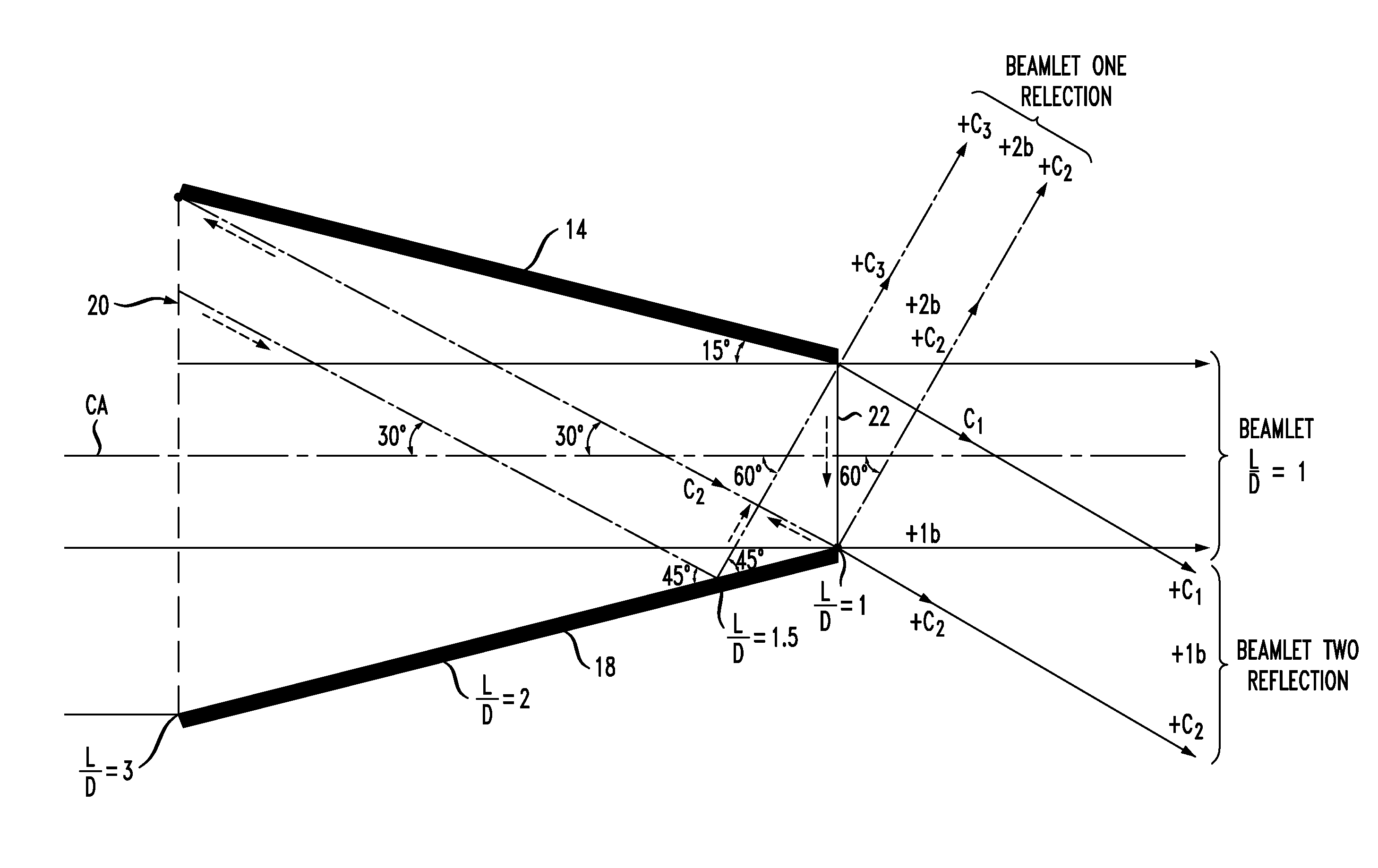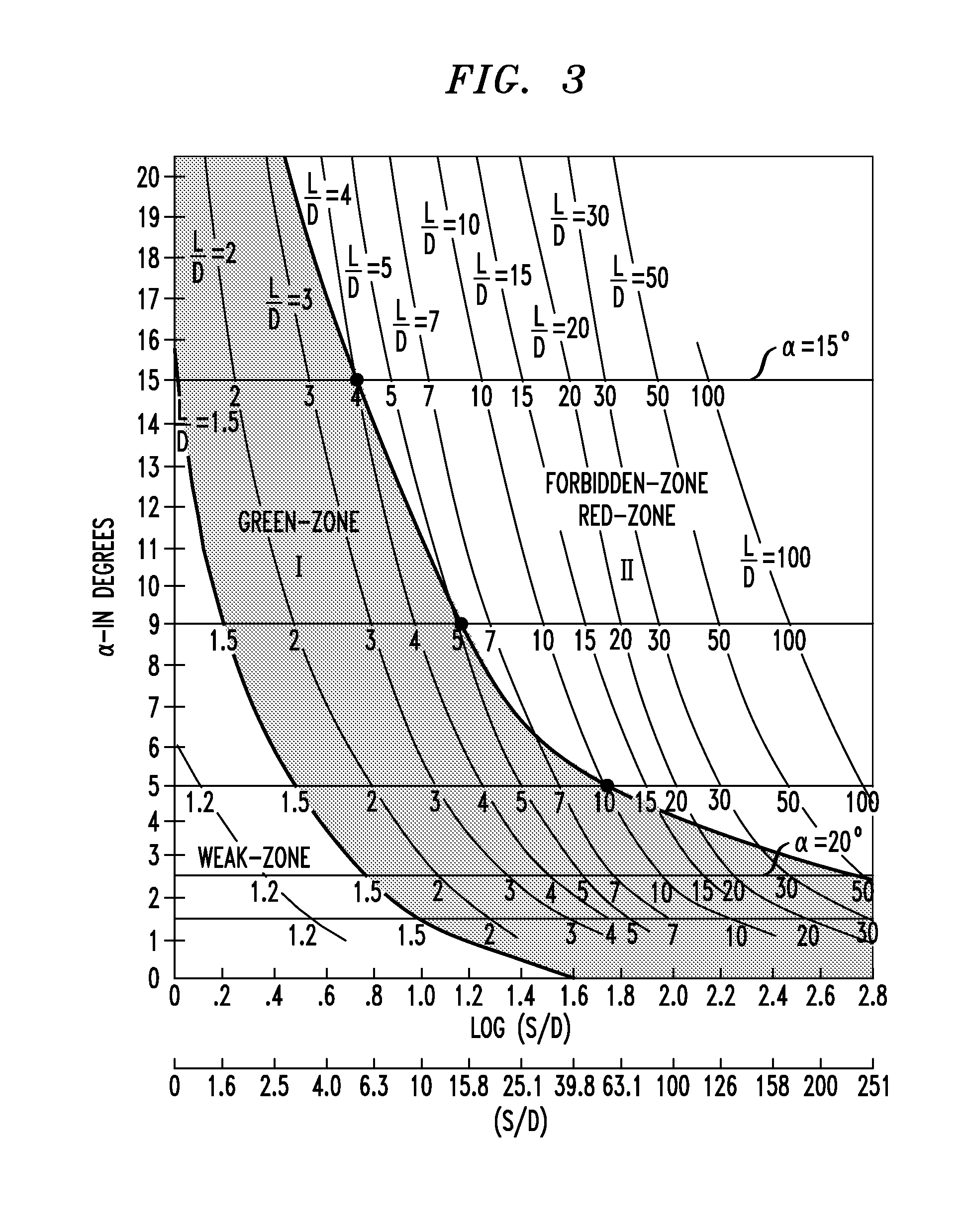Solar Energy Collection System
a solar energy and collection system technology, applied in the field of solar energy collection system, can solve the problems of large environmental problems, high construction costs, and the pace of today's fast-increasing speed, and achieve the effect of less expensive manufacture and implementation
- Summary
- Abstract
- Description
- Claims
- Application Information
AI Technical Summary
Benefits of technology
Problems solved by technology
Method used
Image
Examples
Embodiment Construction
[0035]A novel way of concentrating radiant energy using multiple reflections of light passing down a tapered pyramidal-type structure made from highly-reflective mirrored surfaces is the subject of the present invention. It has been discovered that tapered structures such as these have many properties that make them not only useful, but superior to existing solar collectors. FIG. 1(a) illustrates an exemplary embodiment of a right-angled truncated pyramidal solar collector 10 formed in accordance with the present invention. In this case, collector 10 utilizes a square geometry entrance port and exit port, with tapered reflective sidewalls disposed therebetween. That is, collector 10 is formed of a set of four tapered, planar reflective sidewalls 12, 14, 16 and 18. Collector 10 is shown as having an entrance 20 of dimension L (and area, therefore, of L2). Collector 10 has a length S, tapering downward to an exit 22 of dimension D (and area of D2). Although not explicitly shown, it is...
PUM
 Login to View More
Login to View More Abstract
Description
Claims
Application Information
 Login to View More
Login to View More - R&D
- Intellectual Property
- Life Sciences
- Materials
- Tech Scout
- Unparalleled Data Quality
- Higher Quality Content
- 60% Fewer Hallucinations
Browse by: Latest US Patents, China's latest patents, Technical Efficacy Thesaurus, Application Domain, Technology Topic, Popular Technical Reports.
© 2025 PatSnap. All rights reserved.Legal|Privacy policy|Modern Slavery Act Transparency Statement|Sitemap|About US| Contact US: help@patsnap.com



